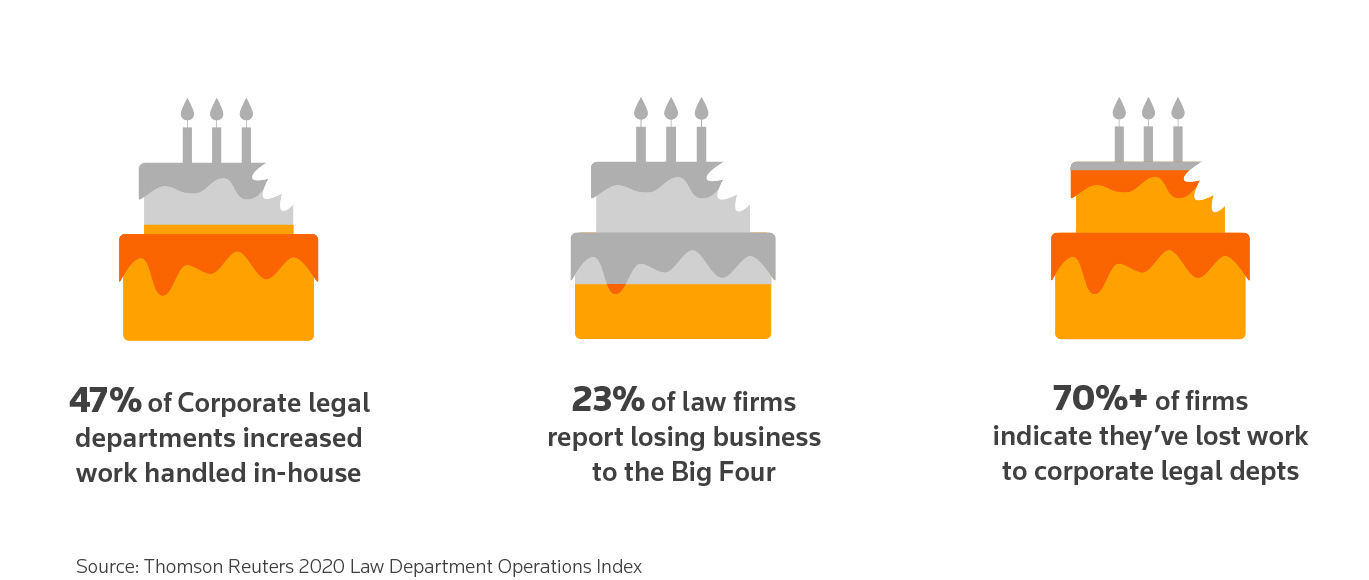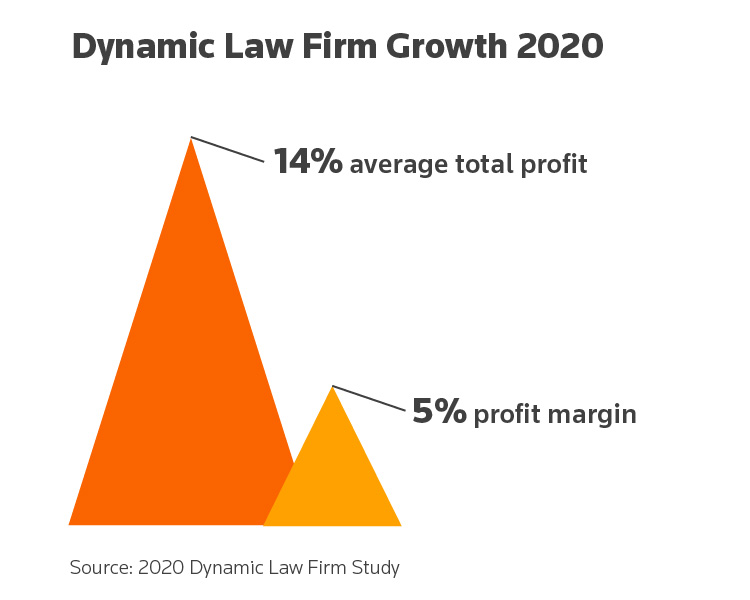A Thomson Reuters’ expert once described the legal market of the time as the “Betty Crocker Era.” Clients seeking legal services (“cake”) have three options.
- Bake it from scratch, which is labor intensive but cheap
- Bake it from a mix, which is convenient and a bit more expensive, but you save by not needing to keep ingredients on hand
- Buy it from a baker, which is expensive but offers personalization and convenience
In this tumultuous time, this analogy is perhaps even more apt as clients are employing a mixture of all three methods to cover their legal needs. In 2020, an average of 47% of corporate legal departments have increased work handled in-house. Of those surveyed, 30% have increased the number of attorneys in their departments according to the Thomson Reuters 2020 Law Department Operations Index. These clients “baking from scratch” have already cost firms, with more than 70% of firms surveyed indicating they’ve lost work to corporate legal departments.

For those “baking from a mix,” ALSPs are a common choice. Alongside many small- and mid-sized providers, this group includes the Big Four accounting firms. Considering the reach and resources of these large firms, it’s no surprise that 23% of law firms report losing work to the Big Four. Furthermore, 77% of corporate law departments of more than 50 lawyers indicated that outsourcing is a primary strategy, indicative of the larger unbundling trend – clients with large portfolios are breaking work among several vendors that used to go to one firm.
And while many large law firms pride themselves on being the client’s chosen “baker” in the third scenario, the outlook is not entirely positive. CLOs surveyed estimate that only 24.7% of their outside counsel fees went to work so important that cost was not a factor. As cost pressures increase and alternatives abound, fewer and fewer clients will choose their most expensive option.
But all is not lost. The 2020 Dynamic Law Firm Study notes an encouraging trend for firms considered dynamic rather than static. Dynamic firms have grown average total profit by 14% and profit margin by nearly 5%. In contrast, the average static firm reported declines in both of these measures. While the factors contributing to these metrics are complex, they serve as a clear indication of the stakes involved. Firms that are taking a proactive approach to their business and competition will continue to win.

Take a systematic approach
Crafting a cohesive competitive strategy that accounts for your firm’s talent, technology, and culture takes time. But getting started is not as daunting as it may seem. Your firm likely already has initiatives underway to set itself apart from the competition. So you’re not starting from square one. In fact, this may afford you the time you need to do the necessary analysis to formalize your strategy.
We’ll discuss a helpful framework to help you think critically about your competitive environment in our next blog.
Learn more about how you can advance your financial and practice management








